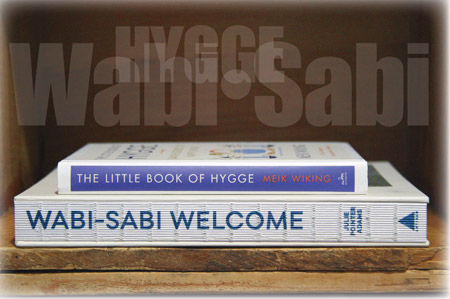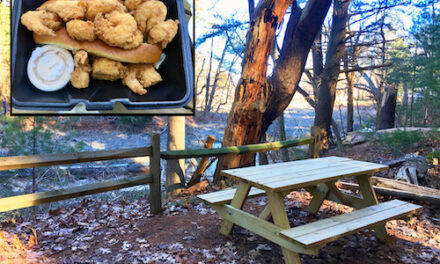Reviewed By Elizabeth Lane.

Comforting concepts from two worlds.
This winter season, we celebrate the art of slowing down, embracing the calm and relishing the present moment. To capture this spirit, look no further than the Danish concept of hygge (pronounced hoo-ga) which loosely translates to “coziness,” yet is more aptly defined not as a word, but as a feeling. Happiness, security, familiarity, comfort, kinship—each one of these words carries with it a sense of hygge.
Alongside this, remembering that all of our moments are fleeting and meant to be held close (both the cozy and the chaotic) brings in a beautiful companion element to hygge which is wabi-sabi, a Japanese phrase that joins two concepts: wabi loosely meaning simplicity, humility, and living in tune with nature; sabi referring to the passage of time and the beauty found within a transient moment. Remember, the concepts of hygge and wabi-sabi were never meant to be translated, they were meant to be felt.
For me, sitting by the fire in the presence of family, drinking a cup of tea while reading a book, all of this is hygge. Saturday game night with family and friends, even helping the kids with homework on a weeknight, this is hygge, too. The wabi-sabi element is noticing the impermanence of these moments and the beauty found within the fleeting.
The Little Book of Hygge: Danish Secrets to Happy Living
Meik Wiking’s The Little Book of Hygge: Danish Secrets to Happy Living is this winter’s perfect companion to usher in the spirit of hygge. A small gem, this book will find a permanent spot by the fireplace or bedside table as a reference and reminder to delight in the moments that bring us connection and contentment.
In the book’s first section, Wiking sets the stage and makes his case for the where, what, and how of happiness (including a simplified Hygge Manifesto, a page that is dog-eared in my own copy), highlighting the Danish culture and their understanding that gratitude and savoring the simple pleasures in life bring an unshakeable joy. As CEO of the Happiness Research Institute in Copenhagen, the author has the research to back his suggestions.

Wiking then moves to the nitty-gritty of hygge, providing recipes, clothing recommendations, quick mood-shifters (a walk in nature is always a good go-to) and tips to bring in the feelings of hygge year-round, not just in the cozy months of winter.
As we know, the things that make us happy comprise a list that is uniquely our own, so use this book not as a prescription, but rather as a spark to find your own stepping stones to happiness. Written in a light and engaging style, The Little Book of Hygge is a wonderful companion to winter well spent.
It is a tall order to expect that all of our moments will be hygge this season, and a very un-hygge expectation at that. This is where the concept of wabi-sabi rounds out our expectations as it counsels us to cherish not the ideal, but what is.
Wabi Sabi Welcome
As Julie Pointer-Adams shares in her beautiful book Wabi Sabi Welcome: Learning to Embrace the Imperfect and Entertain With Thoughtfulness and Ease, “[Wabi-sabi] is about recognizing beauty in the perfectly imperfect, and understanding that authentic loveliness can be found in many surprising places.”
With stunning photography and eloquent text, Pointer-Adams inspires us to not only to accept imperfection as we entertain, but to celebrate the imperfect, for “embracing wabi-sabi …gives us license to reorder our priorities, letting go of what we think is required of us and replacing it with our own version of what special and meaningful look like on our own terms.”
Pointer-Adams shares interior design tips, an inspiration for moments shared with friends and family, and even recipes and suggestions that serve as a beautiful road map to bring wabi-sabi into our spaces and our lives. She shows us a world away from our devices and the seemingly perfect veneer of the Instagram feed and the Facebook status update, revealing where our lives are truly lived: in community through shared moments. She finds reflections of wabi-sabi not just in Japanese culture, but throughout the world, revealing that this essence—this human need for comfort, kinship, and acceptance of the present moment—is indeed universal.
Related articles from our fellow edible publishers:
edible Maine: Discovering hygge-Scandinavian comfort food at home
edible Communities: Scandinavian comfort food
Elizabeth Lane is the book buyer at Partners Village Store in Westport, MA. She lives with her husband and two daughters in Westport, always looking for ways to simplify and celebrate the quieter sides of life, moments which seem often to have a good book at their center.






